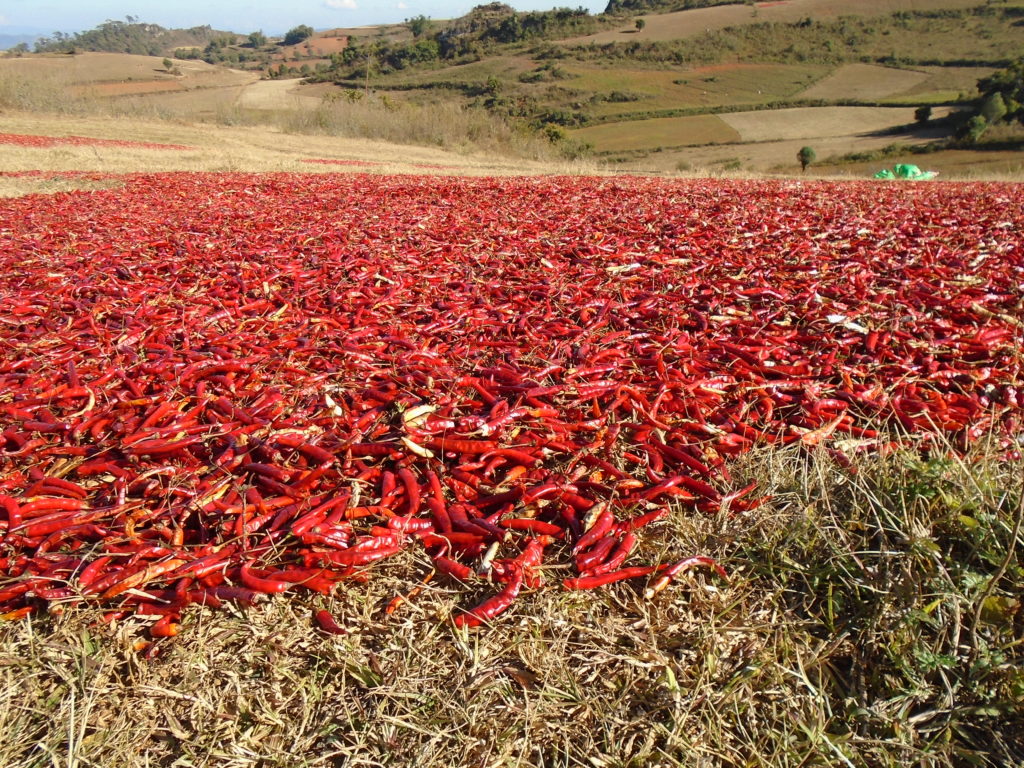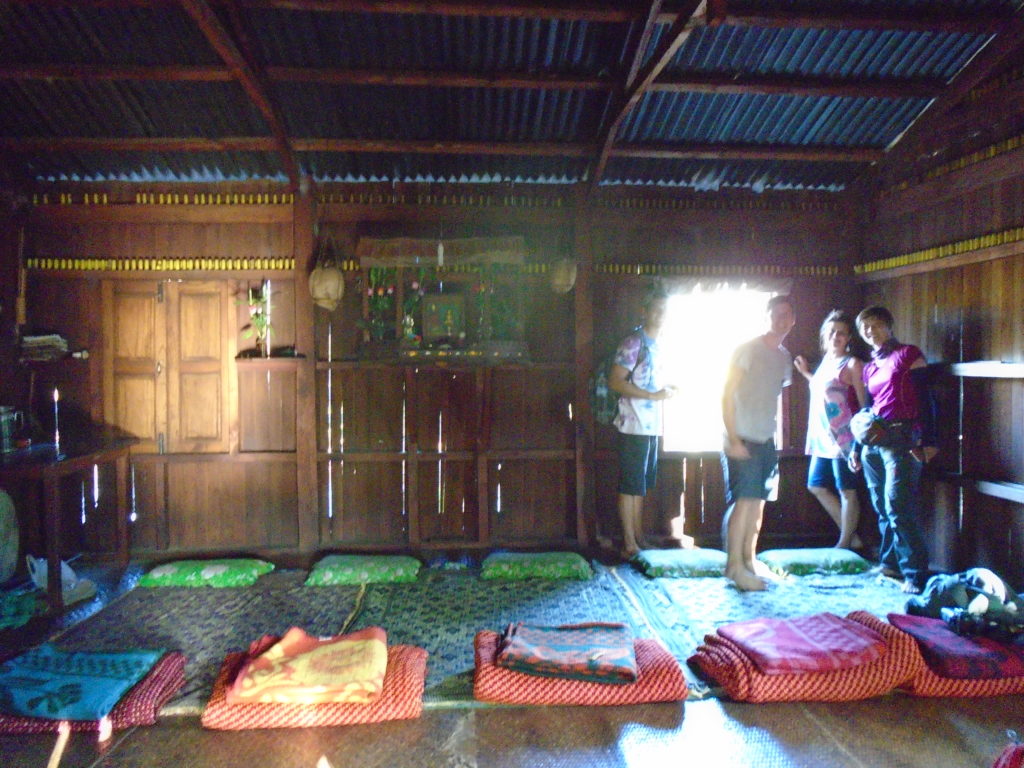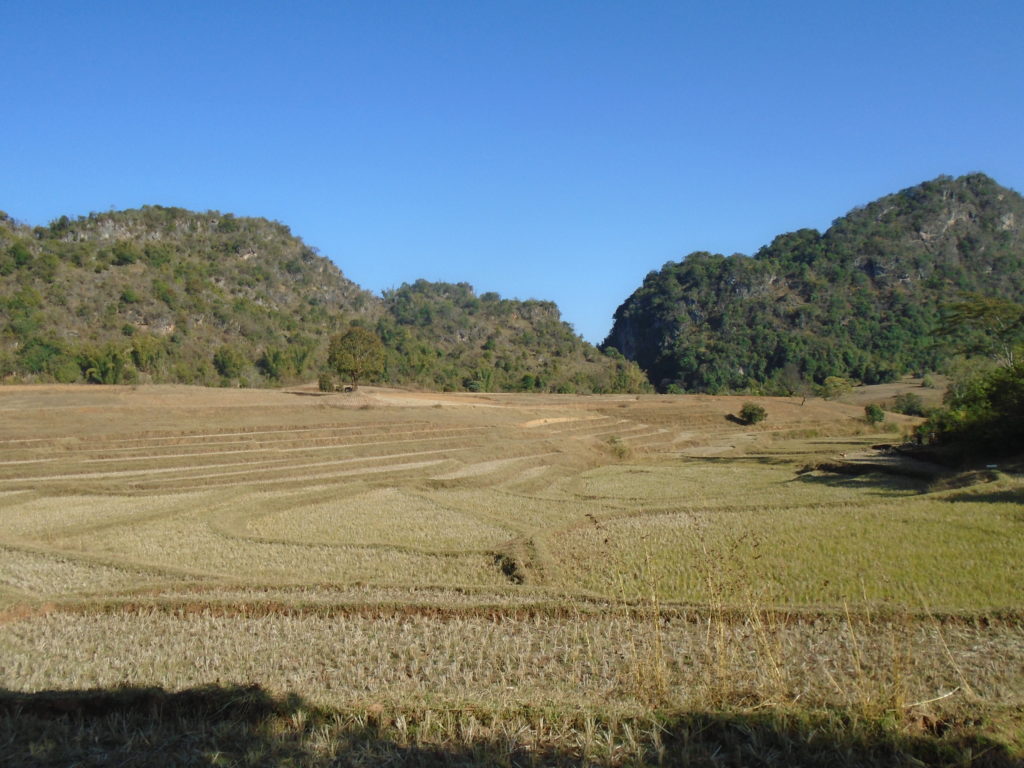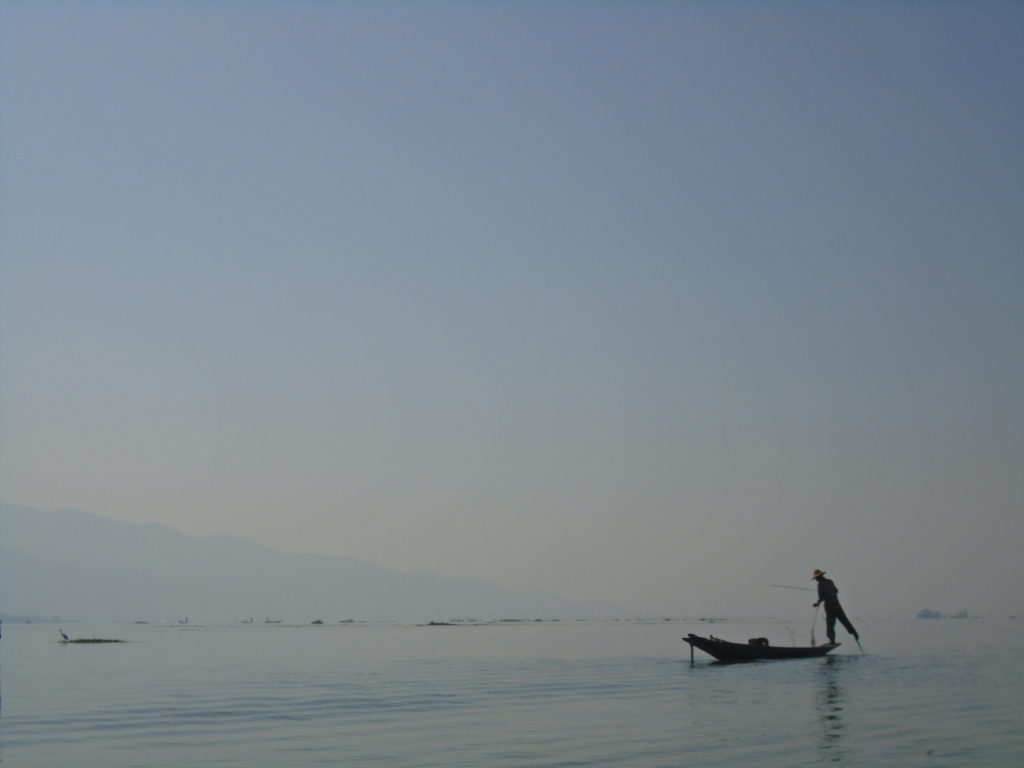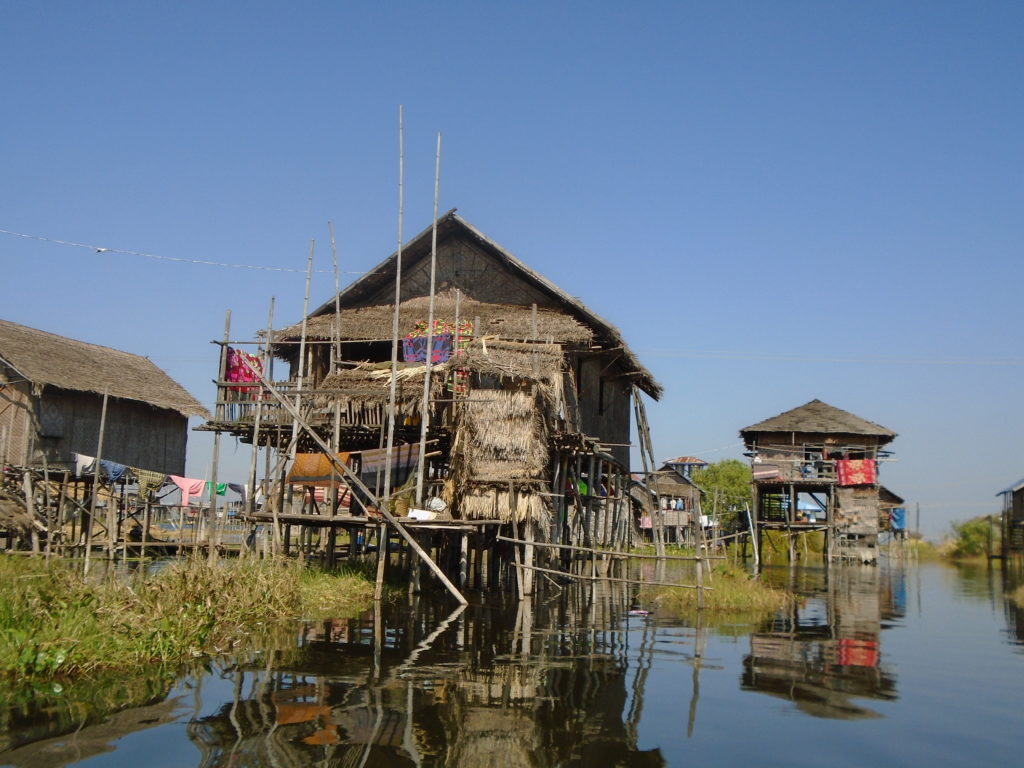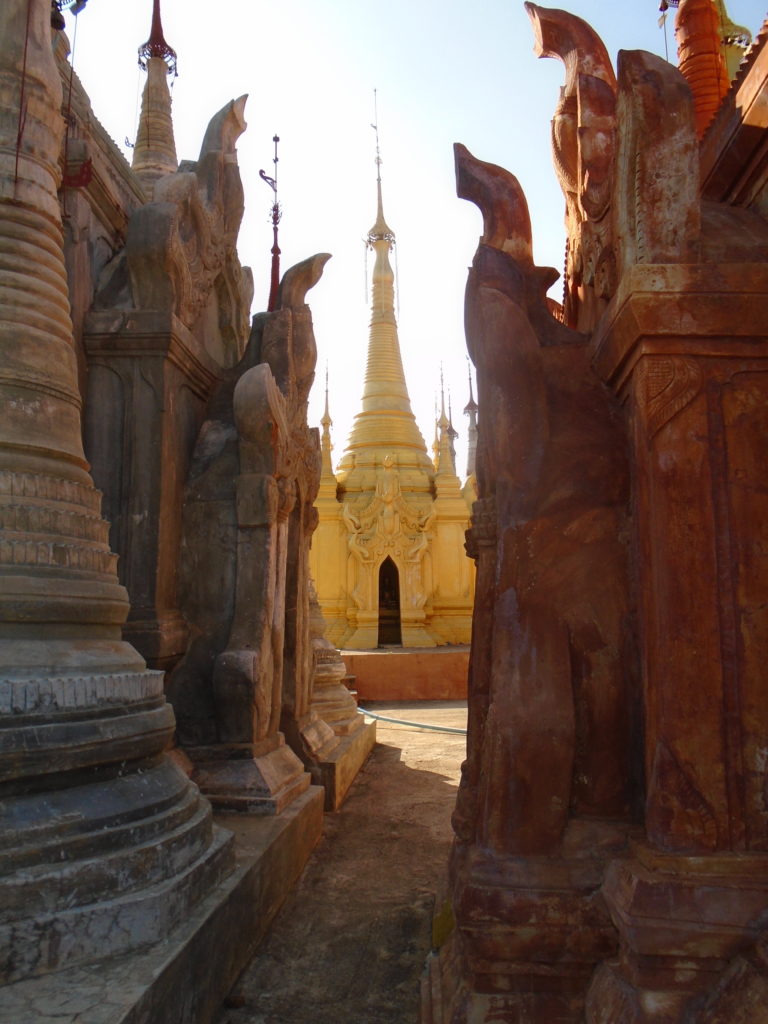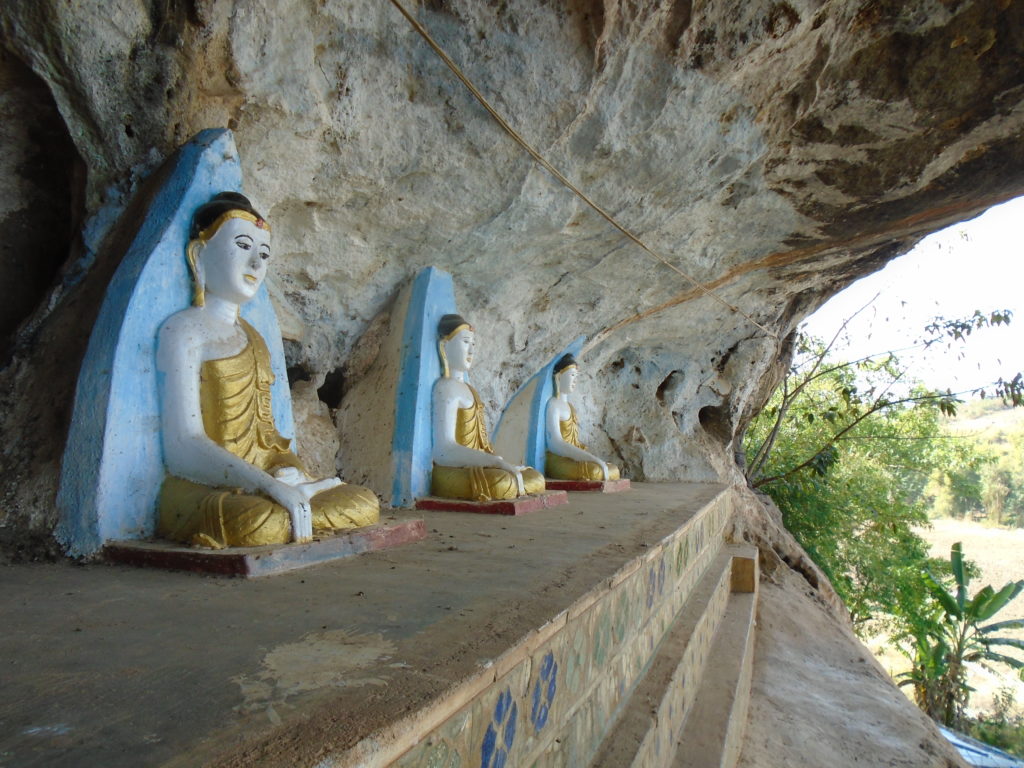Burma was a breath of fresh air for me after India. People were helpful, they smiled not stared, the smells were less, the buses had blankets and toothbrushes, traffic obeyed traffic laws. The country is an odd mixture of developed and traditional: like the men walking with mobile phone pouches attached to their longhi (long skirt worn by men and women alike). All you meet are chewing betel, a mild narcotic that stains saliva and teeth red, turning people into vampires and rotting gums.

I took a bus from Yangoon to Kalaw. The conductor helpfully woke me up at my stop. I sat in a teashop drinking tea until it was light, joined over the hours by other people wanting to hike. There’s plenty of trekking companies in town; we went with the well-known Sam’s. A few minutes of negotiations, some hurried re-packing (our large bags were sent ahead of us), two local Pa-O guides Wei-Wei and Therry appeared and we were off for three happy days walking!
We set off in the early morning sun through rolling pine forests overlooking rice fields. We stopped for lunch at a village made from bricks, concrete and bamboo. Our home for the night after 20km was Wei-Wei’s home village Kyauk Su, lying on a ridgeline. We stayed in the upper room, watching little boys play with a ball and listening for the monks’ bells as they looked for alms.
On the second day, we walking through hills blanketed in bright red chillies drying and rice paddies planned in concentric circles. Women carrying baskets by straps on their heads passed us by. We stopped off at the market in Nantaing to taste peanut brittle, palm sugar mixed with rice in a sugar cane, and something that looked like cheese but was actually tasteless jelly. At the end of 20km, we stayed the night in Part Tu, a larger village with more homestays and the luxury of a shop selling beers. It was a little chilly though and the bamboo walls didn’t hold out the wind well. Maybe it would have been better downstairs with the livestock.
The third day dawned with mist and mystery, cabbage fields emerging out of the clouds. Even in the overcast weather, our guides still wore Thanakha on their faces: a natural cosmetic made from ground-down wood that protects the skin from sunlight and keeps you cool. The vegetable fields became pine forested slopes as we climbed up and then down, catching glimpses of the sparkling lake. At the end of 15km, we finally reached a boat for an incredible journey to Nyaung Shwe on the northern shore. The lake was full of wonderful picture-perfect villages on stilts in the water, tomatoes growing on vines with farmers tending them by boat, and fishermen pirouetting with paddles and cages to catch fish. It was a wonderful end to the hike and was time to say goodbye to our guides, give our feet a rest and watch sunset from the hostel balcony.
THINGS TO DO AROUND INLE LAKE
Even if you don’t hike to the lake, it’s worth a visit for the wonderful water, the villages on stilts, the acrobatic fishermen and the stillness. I went on a very tame horse ride, discovering the Htat En Cave where monks go for deep meditation. I visited the Red Mountain vineyard and drank average wine improved by the sunset view. I took a boat ride and visited villages to learn about silver work, umbrella making and lotus fabric longhi weaving. I got lost in the forest of ancient pagodas at In Dein. There are plenty of boat companies offering boat tours with different stops around the lake, ask around and see which suits you best.
What I found most endearing about the experience was how tourism was relatively new and the people still naive, rather than mercenary. There was a sweetness in their demonstrations and sales pitches that was true and natural. Go now before it is too late.
